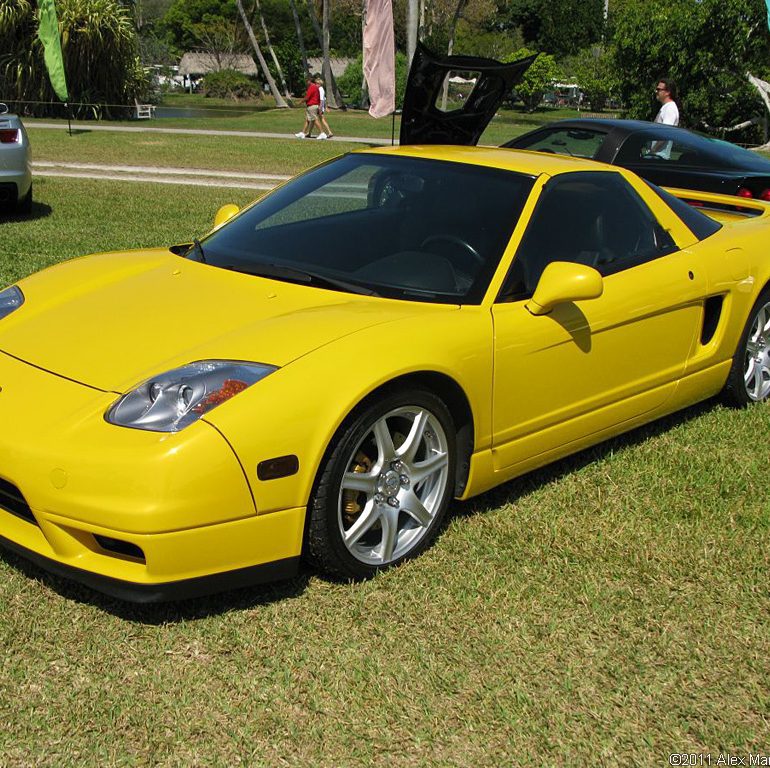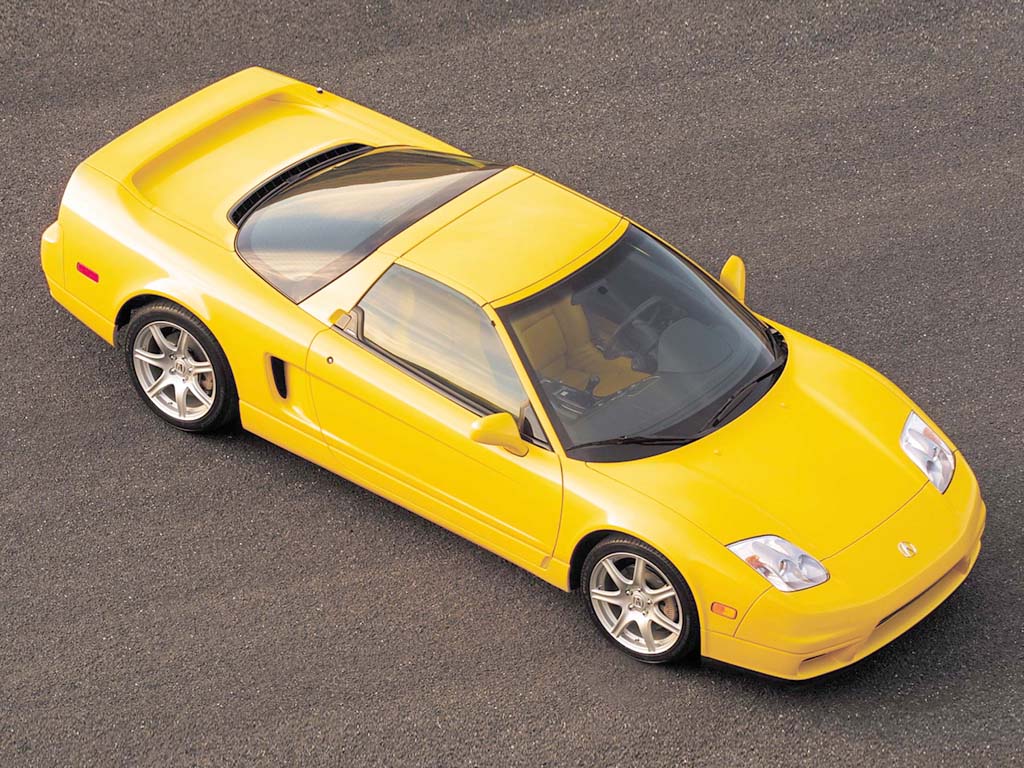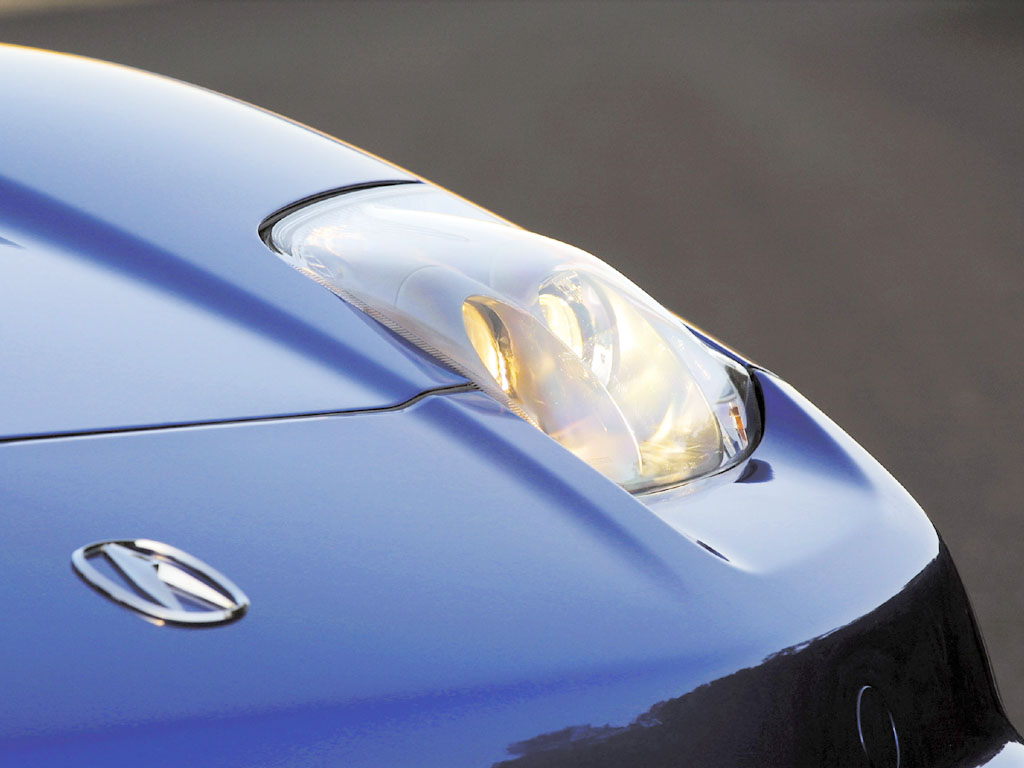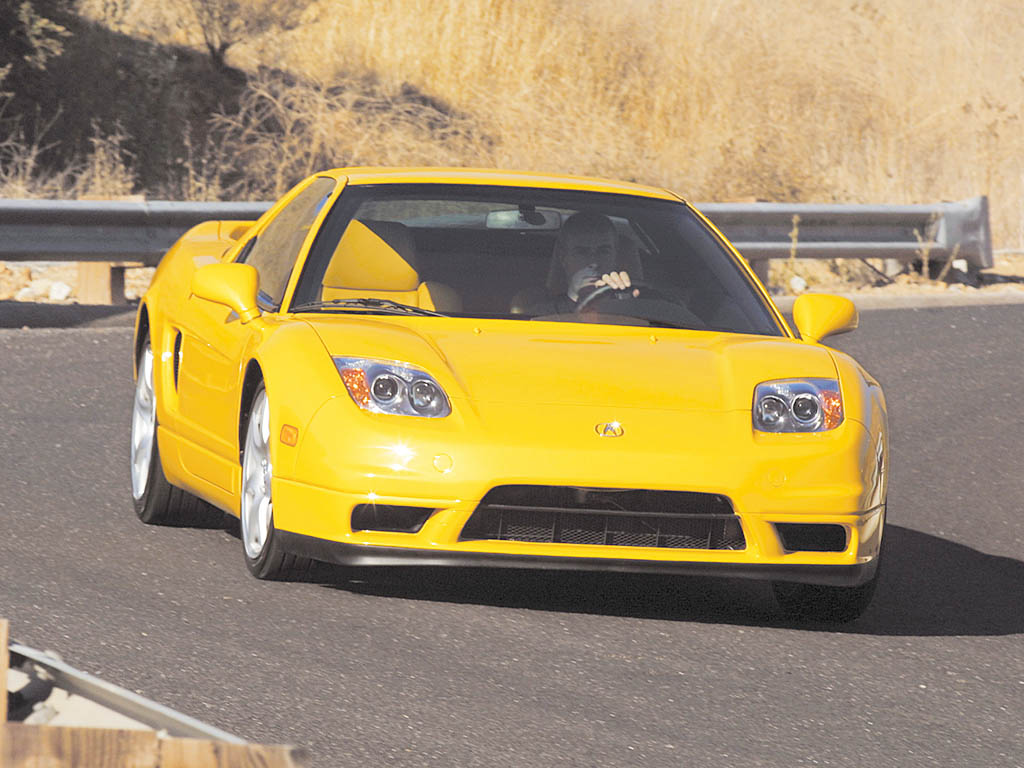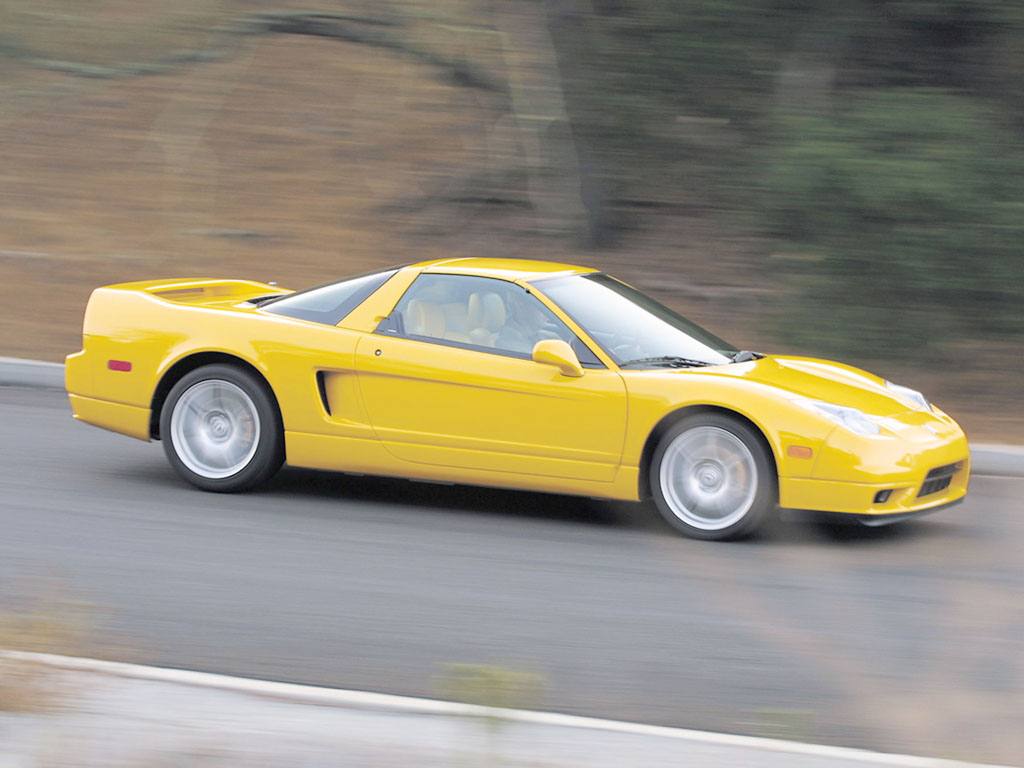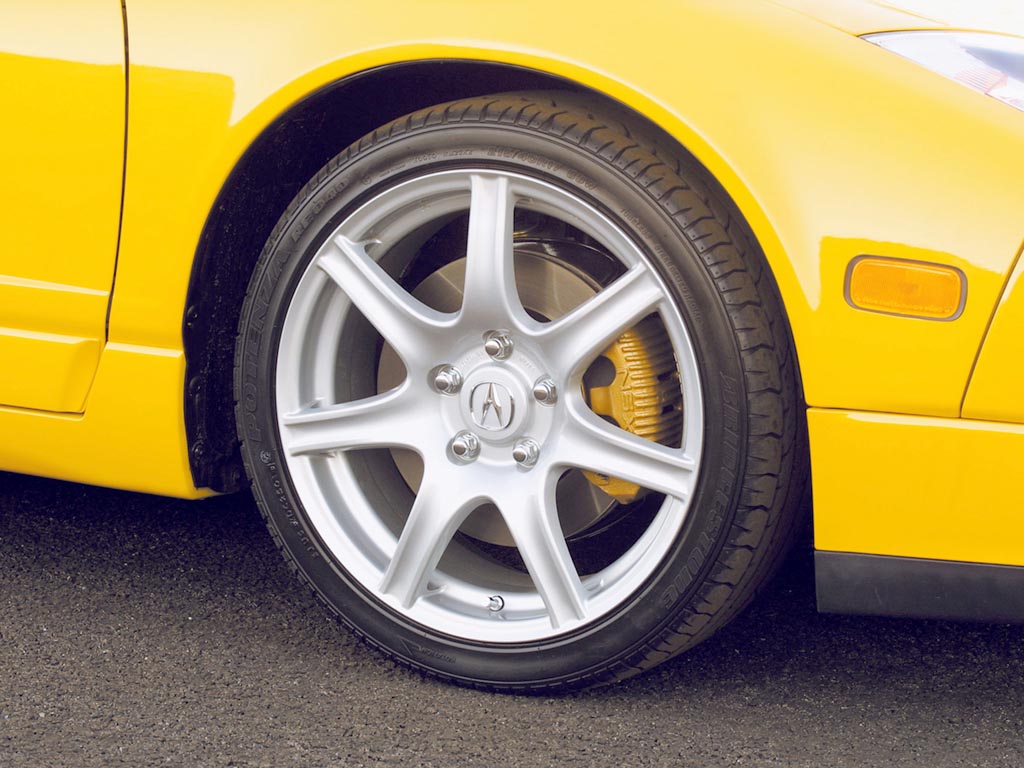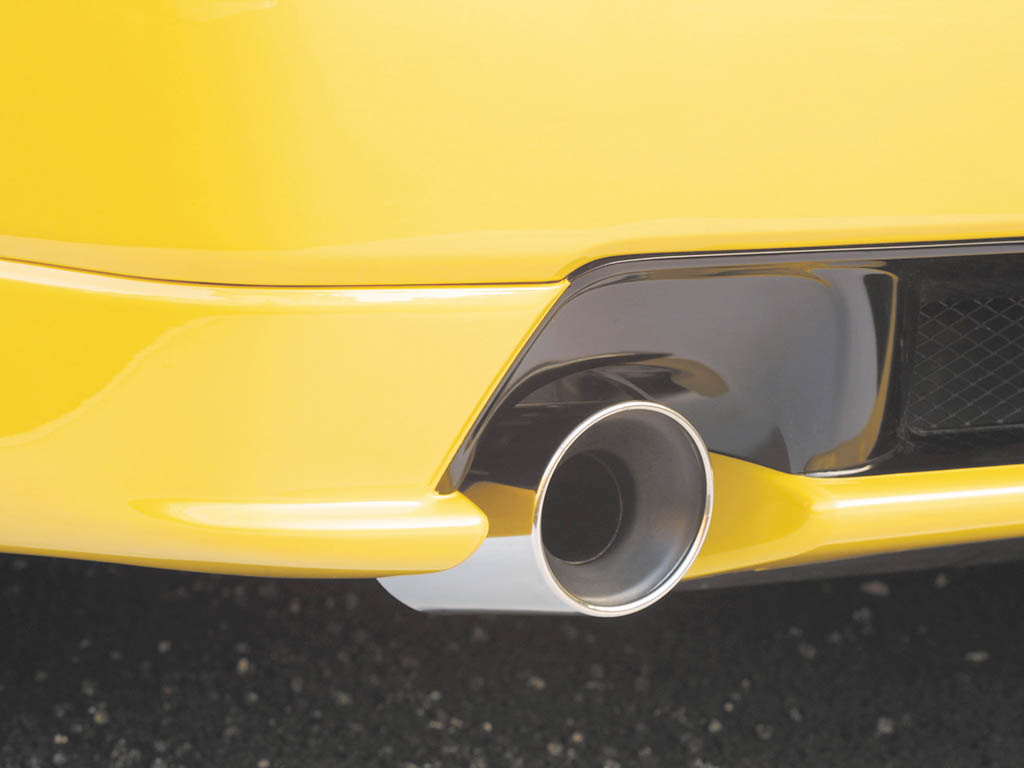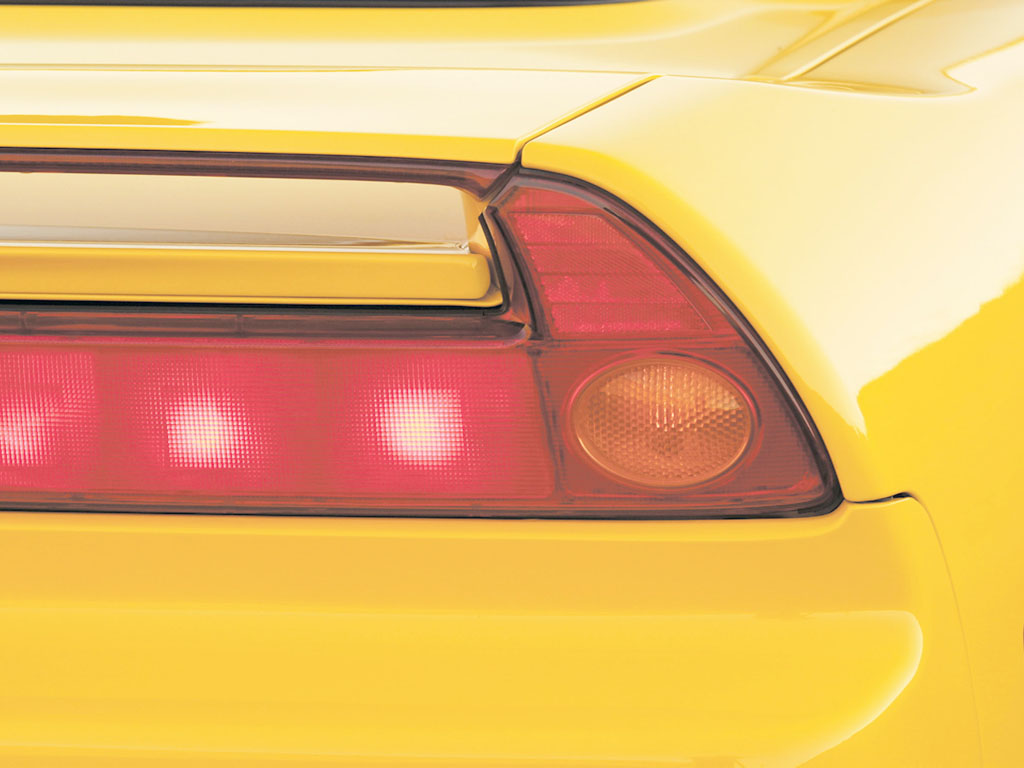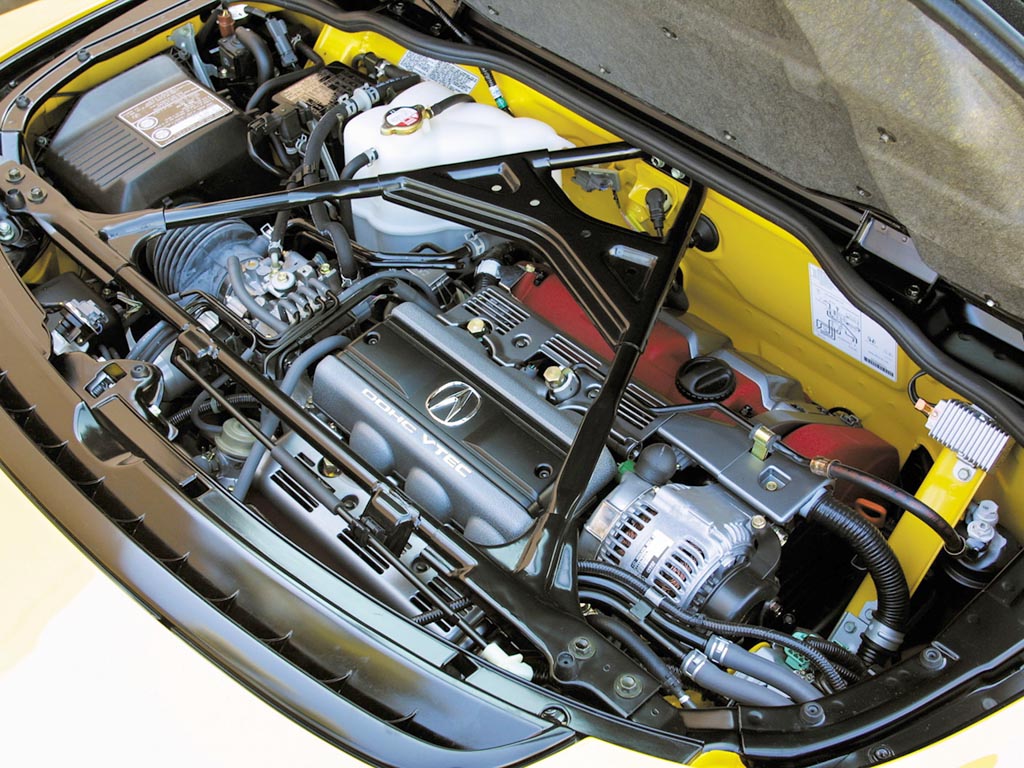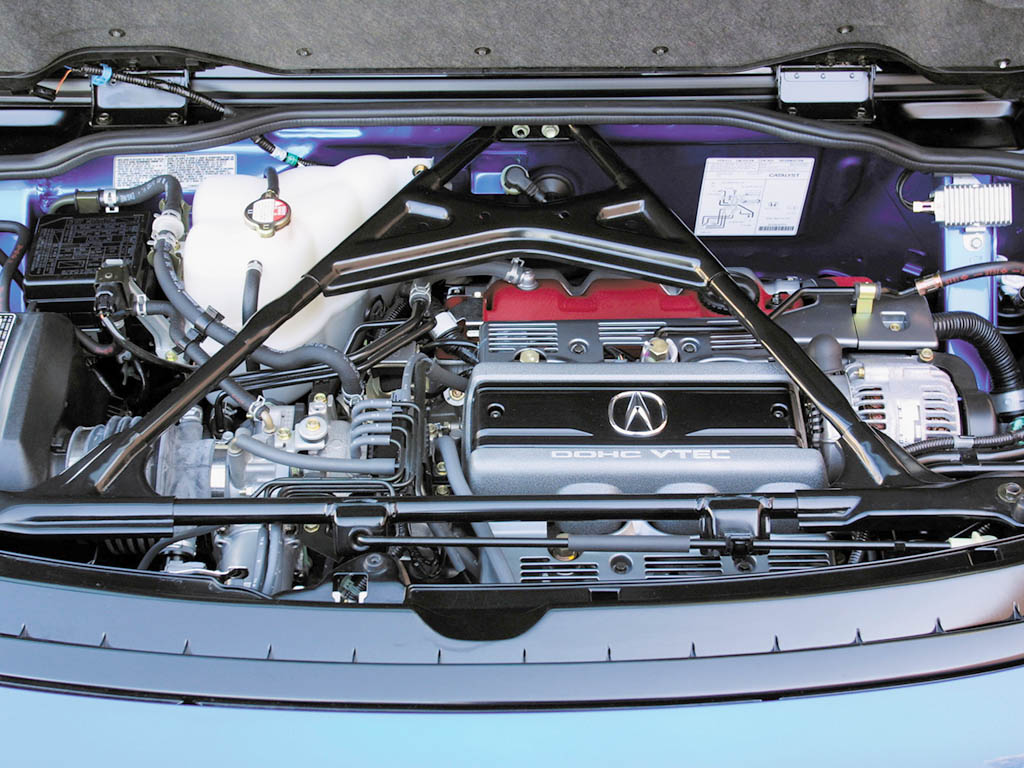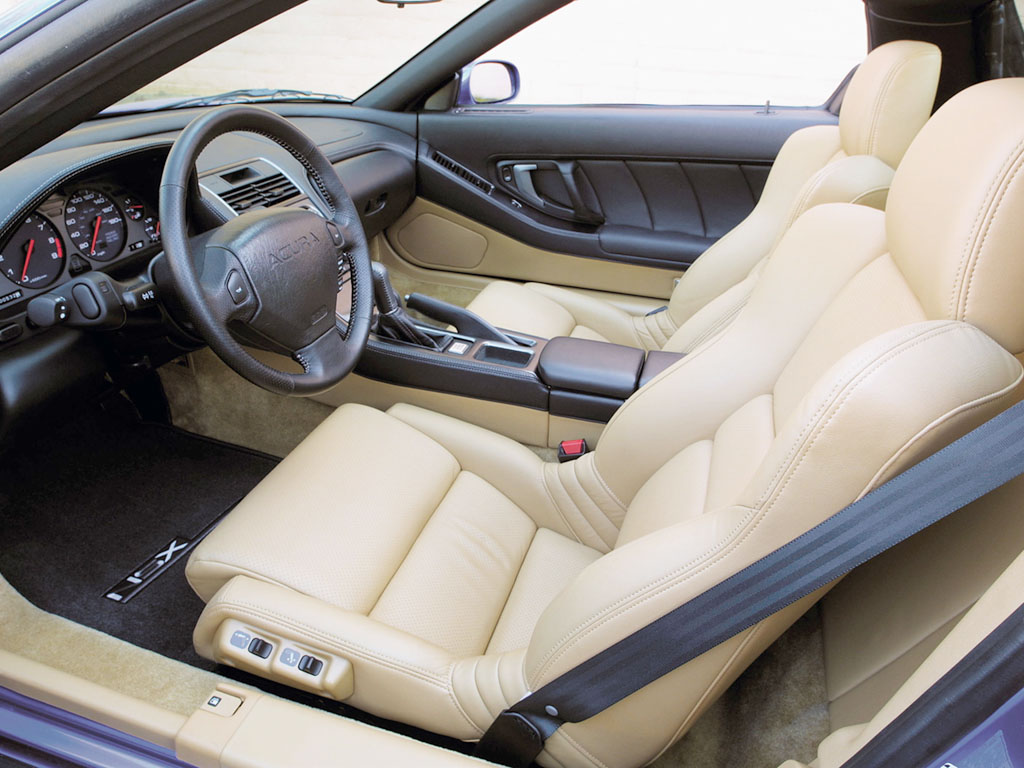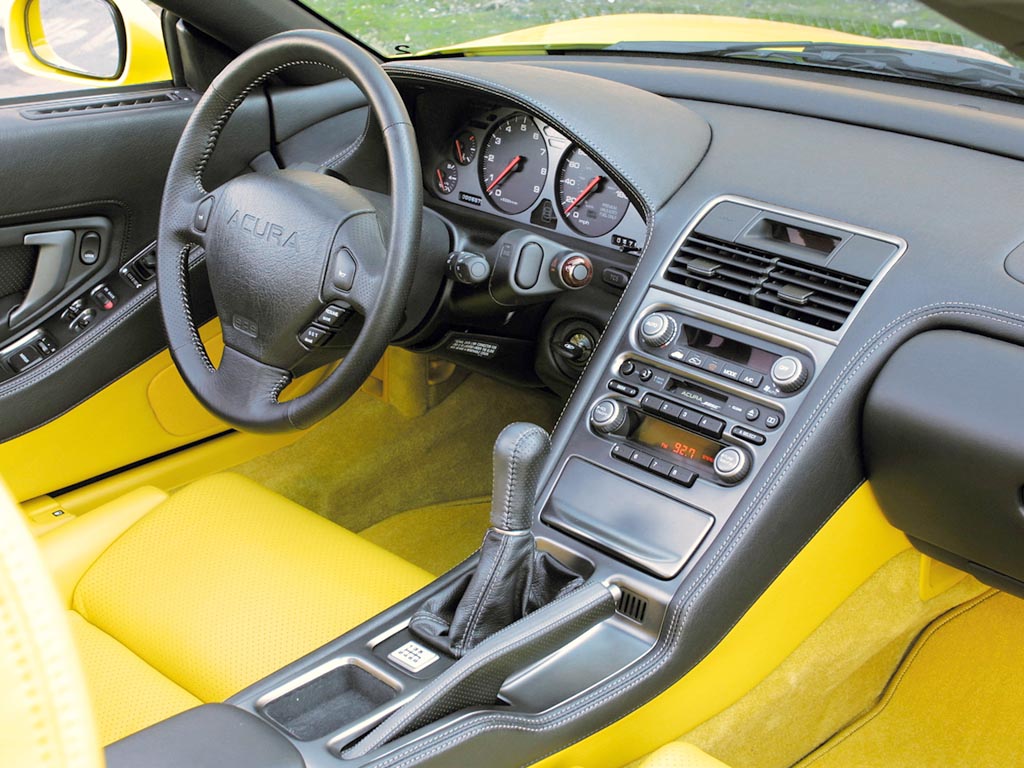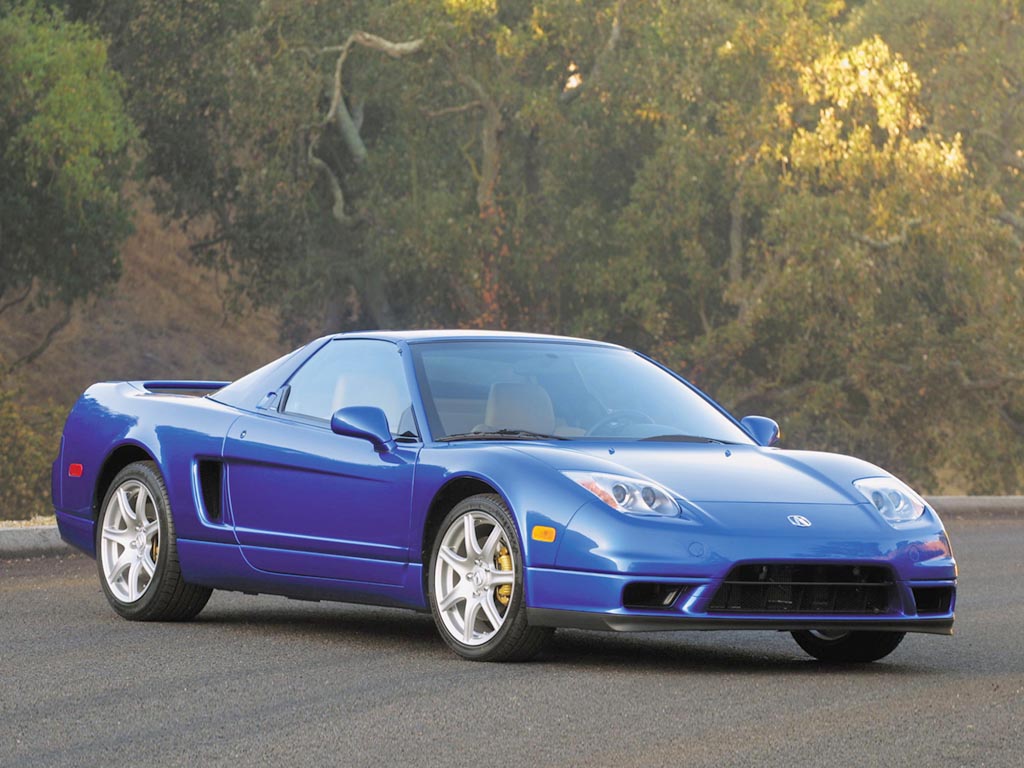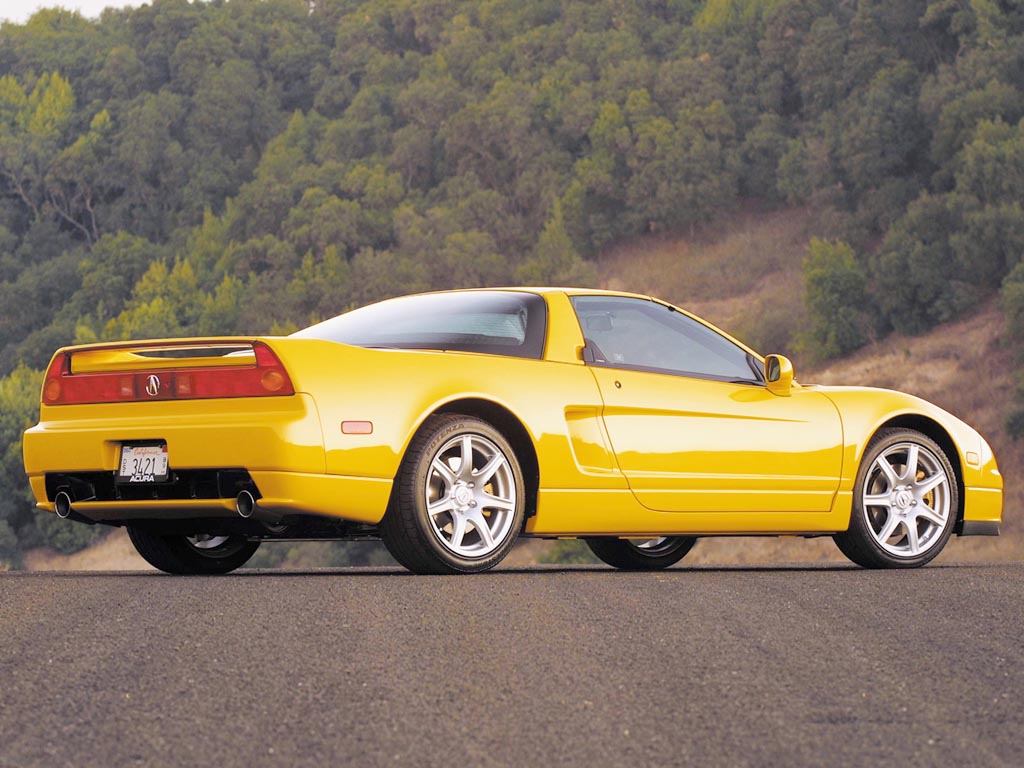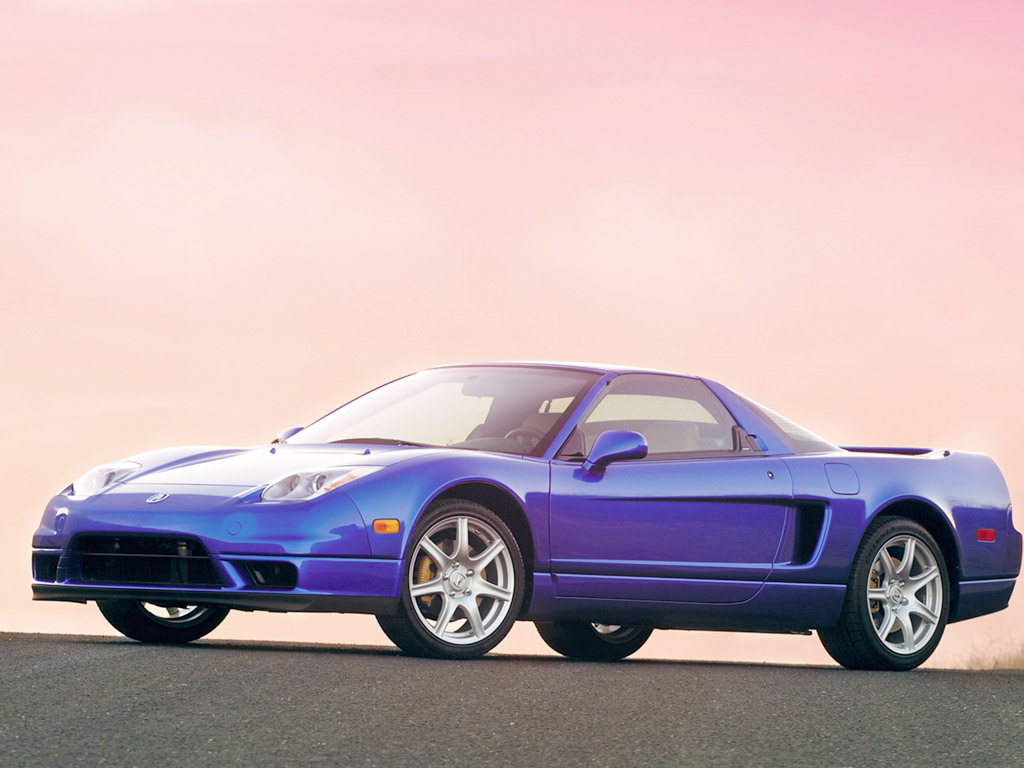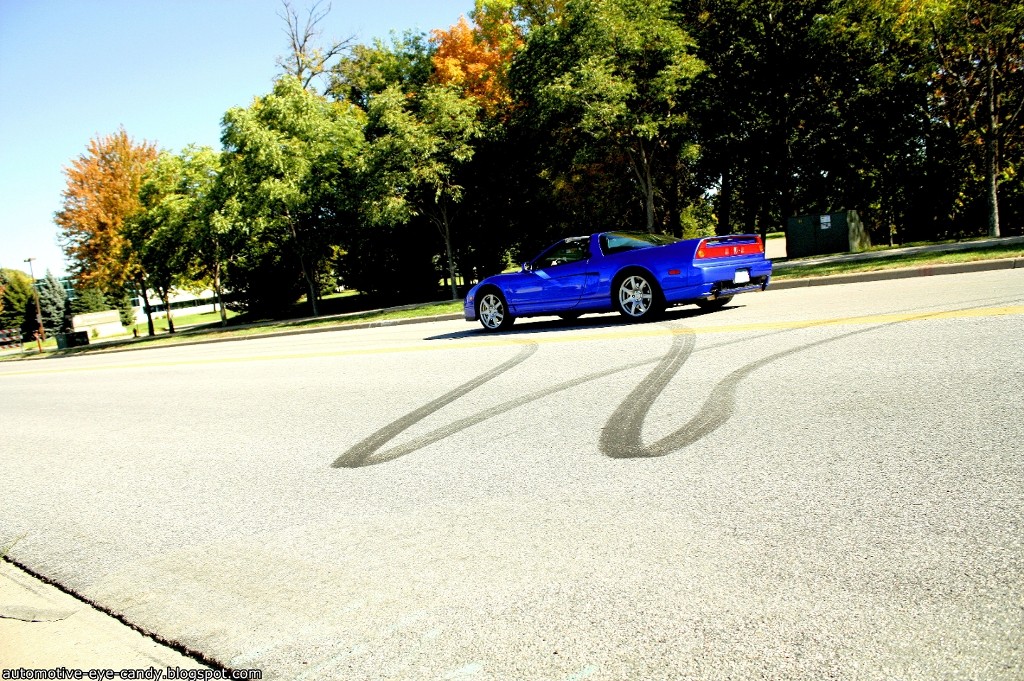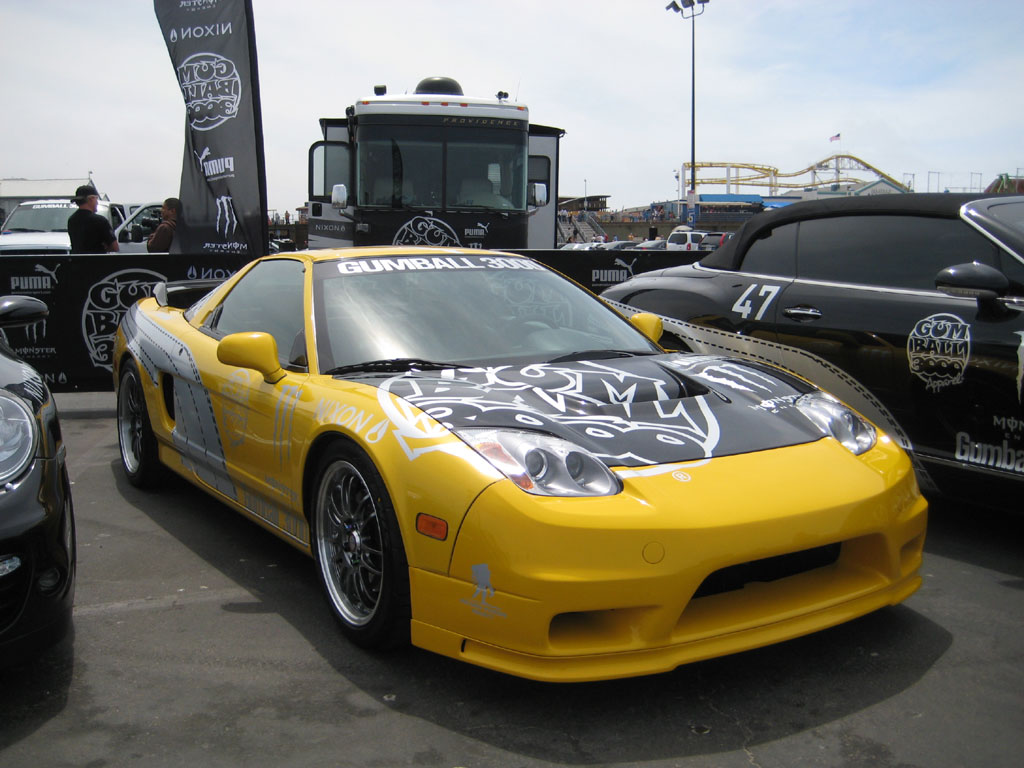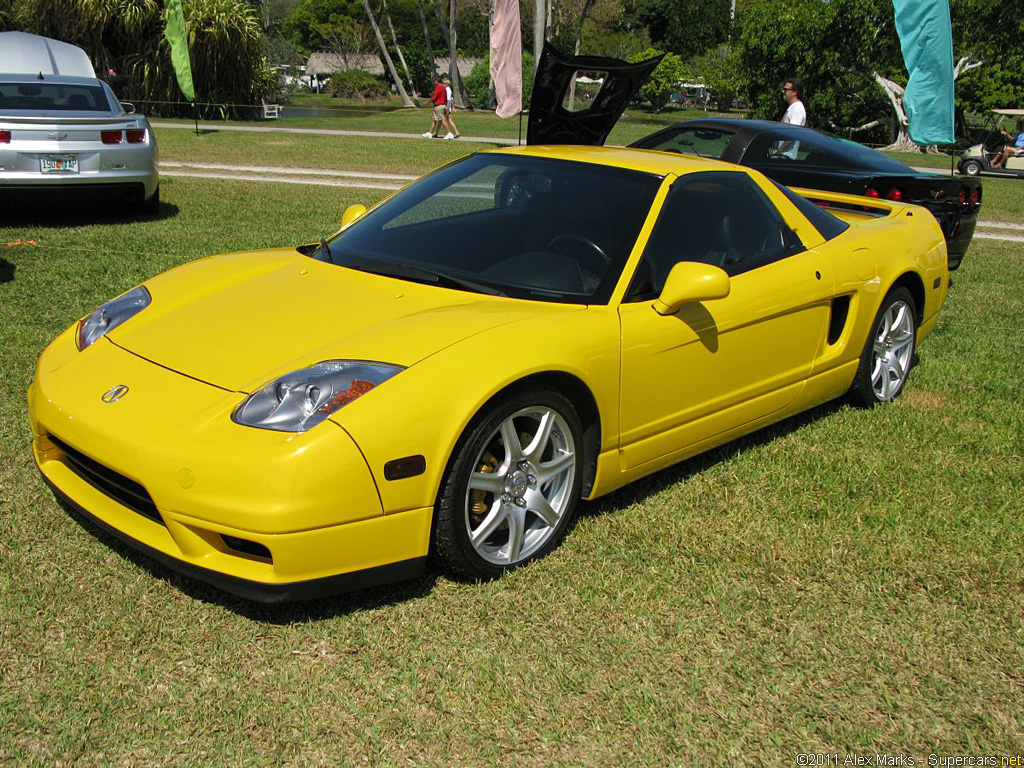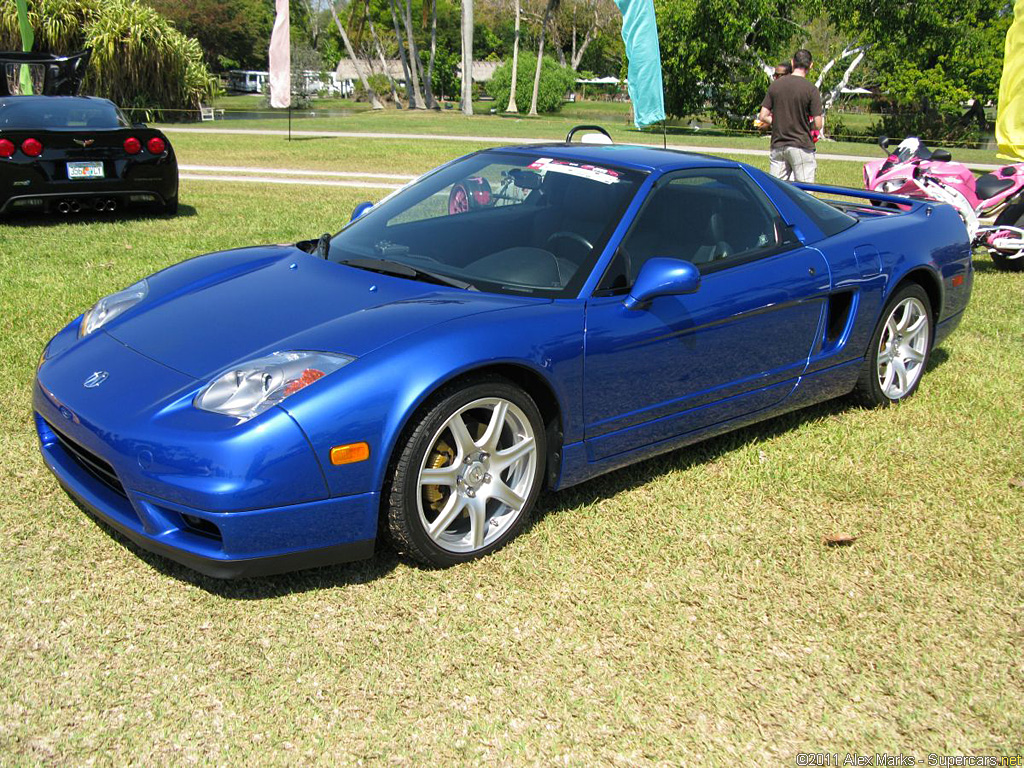2002 Acura NSX
Evolution of a Sports Car
Building on the sleek, mid-engine design and distinctive styling that have made the Acura NSX a favorite among sports car enthusiasts, Acura has given the 2002 NSX a variety of styling enhancements that give it an even more contemporary, high performance look. Combined with refinements to the suspension, these changes not only enhance the way the NSX looks, but also make it more aerodynamic and boost its already impressive performance.
All ’02 NSXs feature a removable roof panel as standard equipment for open-air driving. The front fascia has been changed to give the car a more contemporary, yet still distinctive appearance. The pop-up headlights have been replaced with lighter, fixed position High Intensity Discharge (HID) headlights which update the look while producing twice the illumination of conventional headlights. Other enhancements to the front of the car include an aggressively styled front bumper, a revised chin spoiler and a revised hood line.
In the rear, the turn signals, which in the past have been integrated into the taillight housing, now occupy their own circular housings set off from the rest of the lights. Revised badging, a revised bumper with air diffuser, a new trunk lip spoiler and new exhaust finishers subtly update the rear fascia while maintaining the car’s distinctive design. Overall, external improvements to the 2002 NSX not only enhance the car’s look, but also improve aerodynamic performance enough to boost the car’s top speed from 168 mph to 175 mph.
Chassis
the NSX chassis features all-aluminum construction for low overall weight and high rigidity. The four-wheel independent double-wishbone suspension features aluminum-alloy control arms and hub carriers to minimize unsprung weight for optimum handling. Aluminum subframes for the front and rear suspension further reduce weight. For 2002, the suspension was refined with higher spring rates in front and a larger diameter stabilizer bar in the rear. Tire sizes were increased from 215/45 R16 to 215/40 R17 in front and from 245/40 R17 to 255/40 R17 in the rear. Together, these enhancements reduce body roll, improve steering balance and enhance rear stability for an increase in overall cornering performance.
The NSX’s braking system features large-diameter, ventilated four-wheel discs and an advanced 4-channel Anti-lock Braking System (ABS). A sophisticated Traction Control System (TCS) helps limit wheel-spin and enhances control.
Engine
The standard engine on the NSX is an all-aluminum, 90-degree, 3.2-liter (3179 cc), dual overhead cam, 4 valve-per-cylinder V-6 that produces 290 hp at 7100 rpm and 224 lb-ft of torque at 5500 rpm. It is mated to a 6-speed close-ratio manual transmission. Redline for this engine is 8000 rpm.
An exclusive, electronically controlled Variable Valve Timing and Lift Electronic Control (VTEC(TM)) system optimizes volumetric efficiency at both high and low engine speeds. A unique Variable Volume Induction System changes the configuration of the intake system in conjunction with varying engine speeds, working with the VTEC system to broaden the torque curve and increase peak power output.
In addition to VTEC, the NSX engine also uses a Variable Volume Induction System. This system uses a separate intake air plenum, located beneath the main intake manifold. This second plenum is separated from the primary manifold by 6 butterfly valves, which open between 4600 and 4900 rpm and are activated by manifold vacuum.
When the valves open, the added volume of the secondary plenum creates a higher resonance frequency, which in turn creates a sonic pressure wave. This sonic pressure wave arrives at each pair of intake valves just as they open, promoting more rapid and complete cylinder filling. This system was designed to work in concert with VTEC to improve both low-end torque and high-rpm power.
Story by American Honda Motor Co., Inc., edited by Supercars.net
In Detail
| price $ | $89 000 USD |
| engine | Mid Longitudinal V6 |
| valvetrain | DOHC, 4 Valves per Cyl w/VTEC |
| fuel feed | Programmed Fuel Injection (PGM-FI) |
| displacement | 3179 cc / 194.0 in³ |
| bore | 93 mm / 3.66 in |
| stroke | 78 mm / 3.07 in |
| compression | 10.2:1 |
| power | 208.8 kw / 290 bhp @ 7100 rpm |
| specific output | 91.22 bhp per litre |
| bhp/weight | 202.8 bhp per tonne |
| torque | 303.7 nm / 224 ft lbs @ 5500 rpm |
| redline | 8000 |
| body / frame | Unit Aluminum |
| front tires | 215/40R1783Y |
| rear tires | 255/40R1794Y |
| front brakes | Vented Discs w/ABS |
| f brake size | mm / in |
| rear brakes | Vented Discs w/ABS |
| r brake size | mm / in |
| front wheels | F 43.2 x 17.8 cm / 17.0 x 7 in |
| rear wheels | R 43.2 x 22.9 cm / 17 x 9 in |
| steering | Rack & Pinion w/Variable Power Assist |
| f suspension | A-Arms w/Coil Springs, Tube Shocks, 18.3mm Anti Roll Bar |
| r suspension | A-Arms w/Coil Springs, Tube Shocks, 17.5mm Anti Roll Bar |
| curb weight | 1430 kg / 3153 lbs |
| wheelbase | 2530 mm / 99.6 in |
| front track | 1510 mm / 59.4 in |
| rear track | 1540 mm / 60.6 in |
| length | 4425 mm / 174.2 in |
| width | 1810 mm / 71.3 in |
| height | 1170 mm / 46.1 in |
| transmission | 6-Speed Manual |
| gear ratios | 3.066:1, 1.956:1, 1.428:1, 1.125:1, 0.914:1, 0.717:1, :1 |
| final drive | 4.062:1 |
| top speed | ~281.6 kph / 175 mph |
| 0 – 60 mph | ~5.5 seconds |
| 0 – 100 mph | ~12.2 seconds |
| 0 – 1/4 mile | ~13.4 seconds |
| drag | 0.30 Cd |


